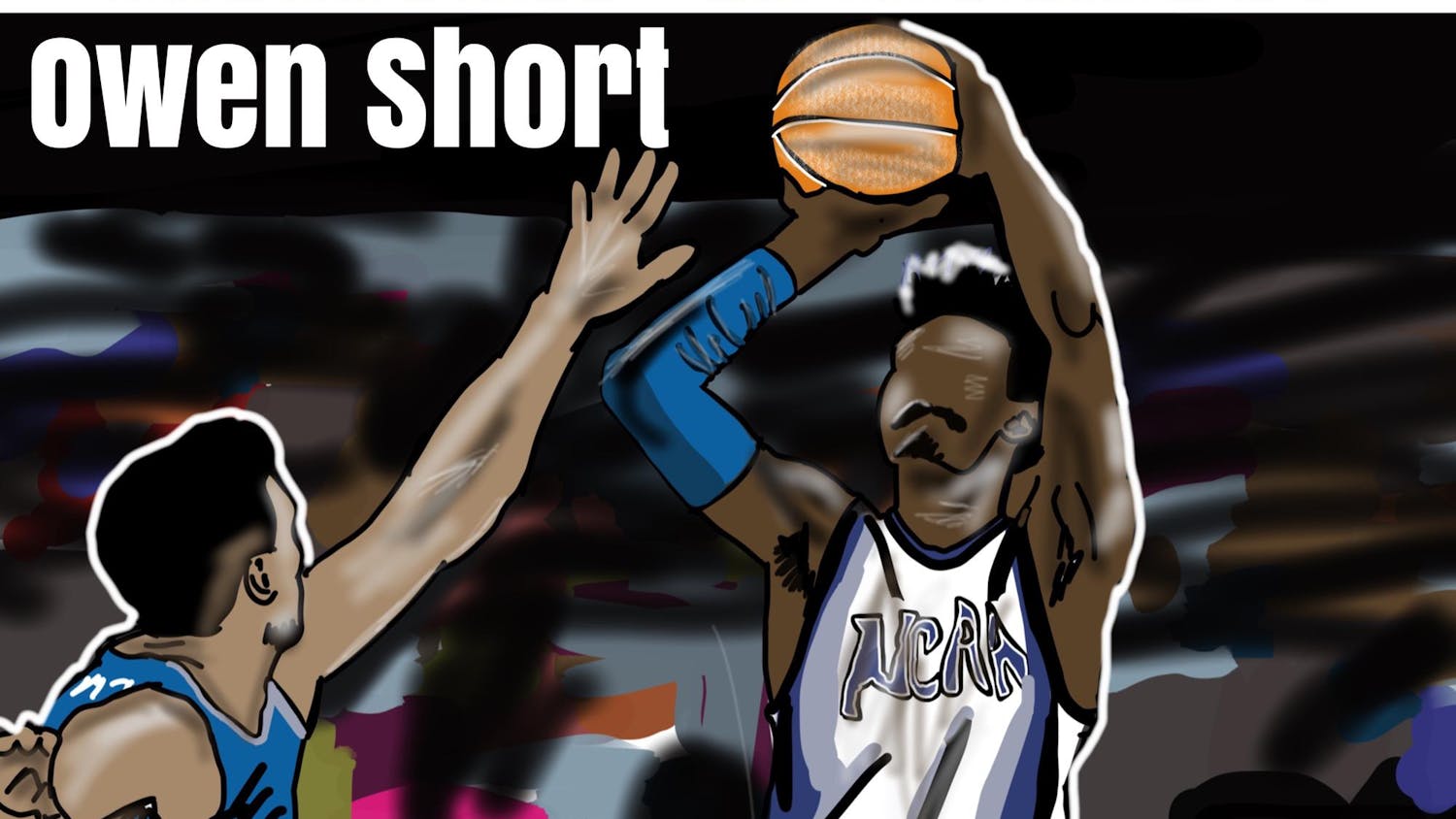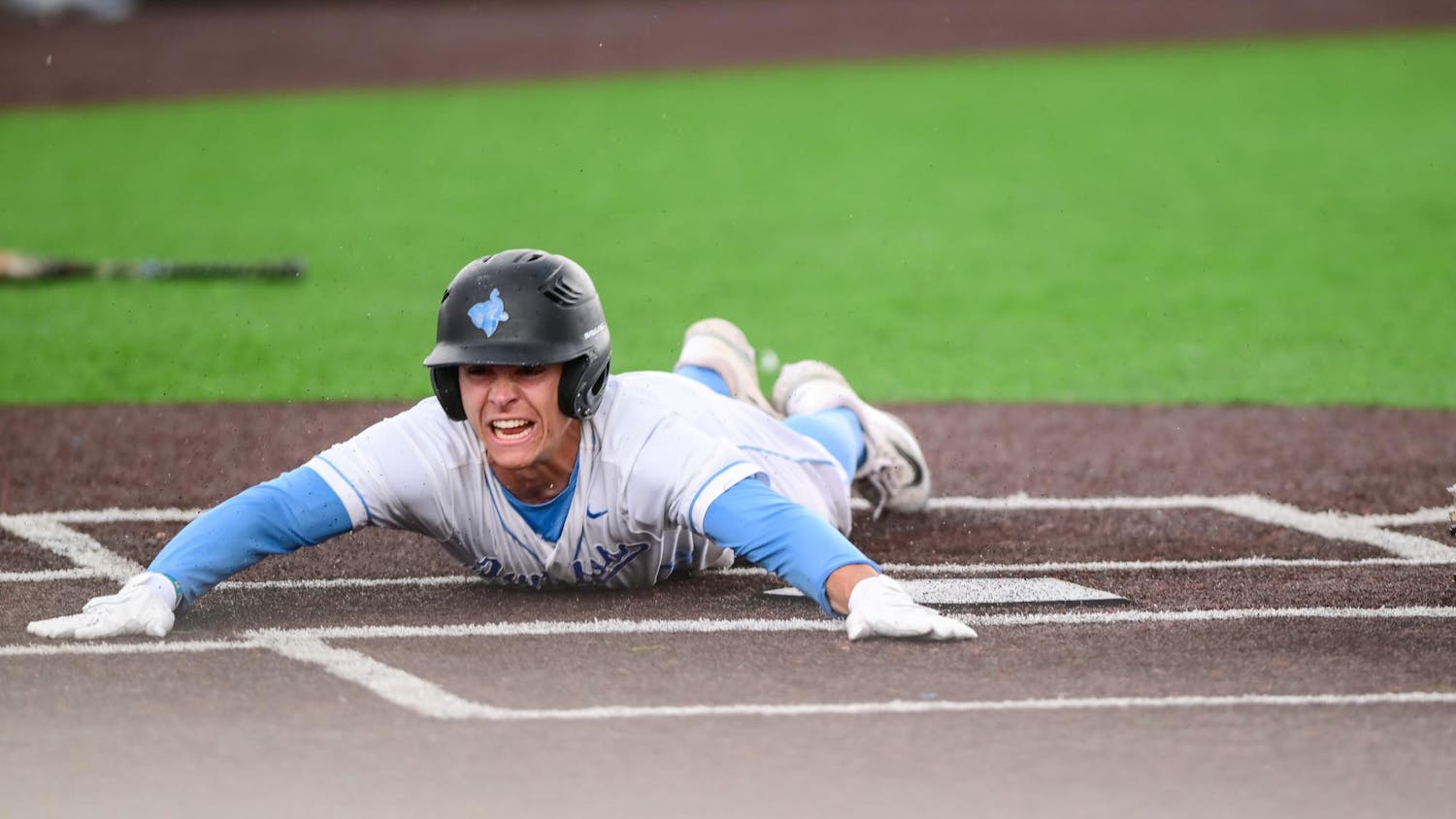It is no secret that the NESCAC is very good at field hockey. The conference boasts four national champions and five runners-up since 1998, and during this span, four different teams have made championship-game appearances. Perhaps never before, however, has there been so much uncertainty about who has the potential to go all the way.
Tufts should be proud to say it plays field hockey in the most competitive Div. III conference in the country, but the NESCAC's all-out preeminence may be dangerous for the Jumbos.
During each season in recent history, one or two teams have emerged as the dominant forces in the league, boxing out the rest and often trading regular-season and NESCAC championship wins. Since 2005, Bowdoin has captured five of the last six conference titles. Only Tufts — which won a championship in 2009 — Middlebury, and Trinity — in the Bantams' own rogue 2009 season — have joined the Polar Bears atop the regular season standings since 2000.
This year, five NESCAC teams are currently ranked in the NCAA's top 15 and, of all the contenders, only No. 12 Amherst and No. 4 Bowdoin remain undefeated after just two weeks of play. It seems necessary to break down these five teams in order to get a better idea of how the standings will look when the dust settles — and to preview what games to watch until it does.
No. 4 Bowdoin at Tufts, Oct. 26
The 3-0 (1-0 NESCAC) Polar Bears are the defending national champions and currently the fourth-ranked team in the country. They boast the return of seven starters, including two All-Americans, Ella Curren and Katie Herter, who cover opposite ends of the field. Bowdoin also has a palpable confidence that may rattle inexperienced opponents and conference underlings. Thus far, however, the numbers don't add up to a championship run.
In its only conference game to date, Bowdoin was pushed by Wesleyan; what should have been an easy drubbing for the Polar Bears turned into a deadlock. Bowdoin held a massive advantage in shots, corners and time of possession, but it wasn't until 1:53 remained in regulation that junior Cathleen Smith was able to find the back of the cage. Then, with two seconds remaining, Bowdoin gave up a penalty corner that went just wide left of the open net. Even more worrisome for the Polar Bears, however, is that they only beat non-conference opponent Wellesley 2-1 — allowing a score off just two shots from the host Blue. In their third game of the season, the Polar Bears allowed two tallies from Southern Maine. Both results are worrisome for Bowdoin when compared to its 2010 results; exactly one year ago, the Blue and Huskies were dismissed 6-0 and 3-0, respectively.
At the moment, Bowdoin doesn't look like a championship threat. Thus far, it has taken the Polar Bears far too much effort — and taken their opponents far too little — to score in three games that marked the easiest portion of their schedule. But, if Bowdoin and head coach Nicky Pearson know how to do one thing well, it's how to win in the playoffs. So, if they do end up in a qualifying spot, there's no telling what they're capable of.
No. 7 Middlebury, def. Tufts 3-2 (PS), Sept. 10
The next-highest-ranked NESCAC team is 3-1 Middlebury, currently No. 8 nationally. The Panthers took the season opener from the Jumbos on Bello Field two weekends ago, but anyone in attendance — or reading the box score — knows the game could've gone either way. In the clutch, junior Lauren Greer and the Panthers used their endurance and speed to finish on top, prevailing in a penalty stroke showdown to best the host Jumbos. Greer, however, could be a blessing or a curse. There is no doubt that is she a gifted player and a dangerous scoring threat, but the Panthers lack the offensive depth that Bowdoin, Amherst and Tufts possess. Furthermore, Middlebury's strategy can often be straightforward and easy to game-plan. When a Middlebury back or midfielder sees an opening, she will inevitably bash the ball through, willing the forwards to chase it. By the end of the season, smart NESCAC defenses could intercept these through passes and find an antidote to Middlebury's attack.
In fact, No. 12 Amherst has already discovered a solution. Middlebury's only loss came in a 3-1 defeat at the hands of the Lord Jeffs, an Amherst victory that marked just the third time in a decade that the Panthers haven't won the regular season matchup. But Middlebury is a notorious late bloomer and even in its matchup at Tufts, the Panthers displayed their ability to adapt and improve. They might have limited tricks, but they also learn their opponents' games quickly.
No. 9 Tufts
Next up are our very own 2-1 (1-1 NESCAC) Jumbos. Tufts has been in the NESCAC championship game three years running and with good reason. The Jumbos have arguably the best small game in the league and a team dynamic that aids their quick passing style. They enjoy great depth on the front end and boast experience and talent in the back. However, Tufts struggles to apply consistent offensive pressure.
The Jumbos have some of the most fundamentally skilled players in the game, but that can be a double-edged sword, as they occasionally over-think their penalty corners, leading to poor execution. Tufts has a tendency to spend a lot of time setting up offensive plays and less time hitting the ball hard on cage. This fault could hurt them against run-and-gun teams and in close games. But a wealth of new faces on the front line could loosen up the Jumbos' offense and balance the more strategically-minded veterans.
Tufts' defense — which is known for stifling opponents' momentum — gives the Jumbos a chance to beat any team in the nation. Its net-minding squad, however, must be prepared to make big saves when the defense fails to sweep the ball in time. Defense wins championships, and Tufts' may just be good enough to win one this year.
Tufts at No. 12 Amherst, Oct. 1
The 3-0 Lady Jeffs are the scariest team in the conference right now. They have years of both underestimation and unpredictability on their side. Like Middlebury, Amherst's scoring threats are hungry — especially judging by their 3-1 victory last week — and, like the Jumbos, its defense has an experienced backbone. Additionally, people are starting to recognize Rachel Tannenbaum, a freshman goalkeeper, as a potential ace in the hole. Amherst started the season with a 1-0 shutout of No. 15 Trinity, scoring just 6:23 into the game and holding the Bantams scoreless for the remainder despite giving up a dangerous penalty stroke midway through the second half.
Amherst shares Middlebury's weakness: It can be one-dimensional. Senior Carly Dudzik dominates its offense, and once the league is familiarized with this up-and-coming Amherst team, opponents who successfully shut down Dudzik could squander any glimmer of postseason hopes. The Jeffs, who have long been removed from playoff contention, may lack the confidence to defeat perennial powers Tufts and Bowdoin. Amherst has shown that it has the skills necessary to turn the old NESCAC balance of power on its head; however, it is too early to tell if the Lady Jeffs have the mindset necessary to do it.
No. 15 Trinity vs. Tufts, Oct. 2
Finally, the only thing scary about the 3-1 Bantams is, well, the Bantams themselves. Trinity's lineup returns this season virtually unchanged from last year's, and it will continue to be the aggressive and speedy team that took three of the four aforementioned squads to overtime last fall. The Bantams can produce one-on-one breakaways in the blink of an eye and are not scared to tackle at full speed, but they haven't looked consistent enough in the past two seasons to string together a serious playoff run. In the NESCAC, skill almost always beats physicality and, as the season goes on, it seems that the other ranked squads' cleaner styles will win out. But, with so many teams ranked so close together, a single Trinity breakaway score could have significant consequences.
Overall, these teams are bound to swap places a few times. It's doubtful that such a young, wily Amherst squad can finish the regular season without a conference loss, or that Bowdoin will trounce teams once it faces tougher competition. Whatever happens, however, 2011 is sure to be a high stakes adventure with very few clear pre-matchup favorites. And, certainly, every goal this fall will hold a little more weight than it has in recent years.





